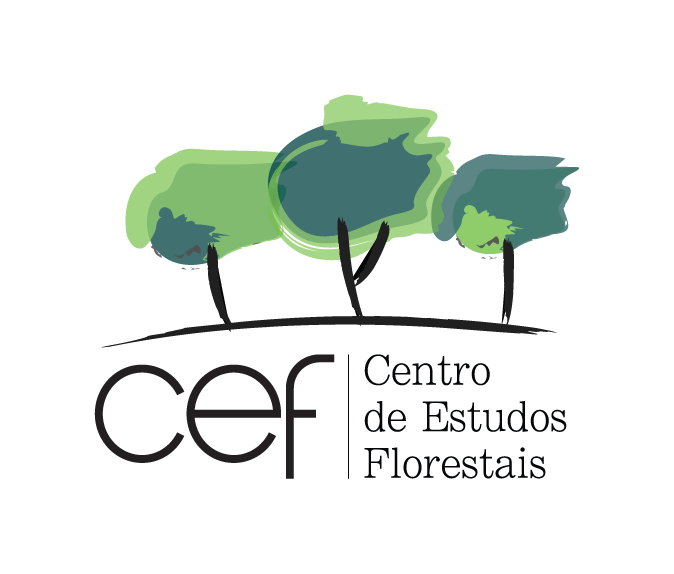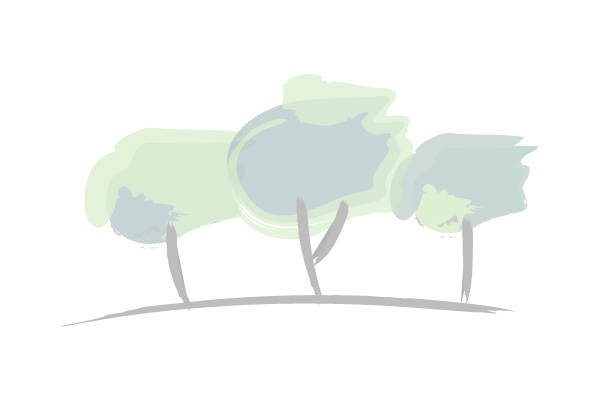
Experimental thinning mixed plots of cork oak and stone pine
State: Active
Start: 2023
Location: Herdade de São Julião, Canha
Three rectangular plots were established in a cork oak and stone pine plantation with the aim of monitoring the impact of stone pine density reduction. Different thinning weights were considered for each plot (no removal, 15% and 45% of stone pine removed). Pine trees were pruned in both thinned plots. All trees were numbered, georeferenced and measured before thinning and prunning took place. The values of diameter at breast height, crown diameters, total tree height, height to the base of the crown, stem height and debarking height were recorded.
Responsible: Susana Barreiro
ForChange

Eucalypt experimental mixed plantation
State: Active
Start: 2023
Location: Herdade da Calha do Grou, Coruche, central Portugal
The eucalypt mixed plantation was established under the scope of COMFOR-Sudoe project in partnership with Altri Florestal and is now part of the FORMIX network. The experimental mixed plantation aims to investigate biodiversity and forest ecosystem functioning relationships in the context of climate change. Eucalypt was selected as the main tree species to be planted for the contributions to the pulp forestry sector; whereas mediterranean cypress and strawberry tree were chosen as secondary companion species for their ability to provide regulating and supporting services. The species selection combines broadleaved and conifer grown both in mixtures and monoculture plots to allow net biodiversity effects to be estimated. All compositions (except mediterranean cypress and strawberry tree) were replicated in at least three blocks. A row-wise or strip-wise mixing pattern was selected to facilitate silvicultural operations (e.g., cleaning and thinning). A initial density of 1175 trees ha-1 was considered and a mixing propostion of 60% eucalypt and 40% mediterranean cypress or 40% strawberry tree (for the 3-species plot a 60-20-20 share was consided). Long-term management and monitoring to better understand how the compositional and structural diversity of mixed plantations influence their temporal stability.
Responsible: Susana Barreiro
ForChange

Marteloscope
State: Active
Start: 2023
Location: Quinta da Casa Velha, Ourém, central Portugal
The Marteloscope aims to be an open doors’ classroom to study the development of mixed stands. The area is dominated by forests inspite it used to be mainly used for agriculture. The Marteloscope comprises a 1-hectare plot including a mix of deciduous and evergreen species such as Pinus pinea, Pinus pinaster, Quercus suber, Quercus faginea, Crataegus monogyna, Fraxinus spp., and Eucalyptus spp. The 1-hectare is divided in 16 subplots of 25x25 meters (numbered from 1 to 16). As there were no interventions for a long time, the understory was deeply coverd with Ulex spp. and Rubus spp that had to be removed to allow the establisment. All trees were measured (height and diameter), numbered and georeferrenced and microhabitats characterized. Additionall, the area was laser scanned during the leaf-off season using a terrestrial hand-held system and a unmanned aerial vehicle.
Responsible: Susana Barreiro
Publications:
Tupinambá-Simões F., Pascual A., Guerra-Hernández J., Ordóñez C., Barreiro S., Bravo F. (2025) Combining hand-held and drone-based lidar for forest carbon monitoring: insights from a Mediterranean mixed forest in central Portugal. Eur J Forest Res . DOI: https://doi.org/10.1007/s10342-025-01772-7
ForChange

Network of Permanent Plots in Mature Birch and Sycamore Stands for Sap Production Trials
State: Active
Start: 2024
Location: Serra do Gerês; Corno de Bico; Penhas da Saúde
The network includes six plots of variable area (one plot per species in each region) with a fixed number of individuals: 40 birches (Betula pubescens Ehrh.) and up to 20 sycamores (Acer pseudoplatanus L.). The individuals are georeferenced, and their diameter at breast height and total height are measured. In each plot, half of the stand—equally represented across diameter classes—was designated for testing sap production in Portugal, a product with no previous record of production in the Mediterranean or Western Europe. This product is sustainably harvested for approximately 30–60 days between winter and spring. In February 2025, this sap trial began in all plots, and its results are part of the doctoral thesis of the researcher responsible for the study. Additionally, to assess whether this harvesting affects tree growth, two dendrometers (treatment/control) were installed per diameter class in each plot. This study aims to validate the productive potential of sap in Portugal, a non-timber forest product of significant interest for food, medicinal, and cosmetic applications. If confirmed, this product could serve as a strong argument for the renewed cultivation of these two native species, which also produce highly valued timber across Europe, as forestry services previously promoted in various mountain ranges during the 20th century.
Responsible: Tiago Lima
ForChange

Arboreta
State: Active
Start: 2012
Location: Tapada da Ajuda (Campus do ISA)
The Arboreta trials aim to test 38 forest species and 150 provenances, in a long term climate change effect monitoring, as part of the international REINFFORCE 38 Arboreta network. - Dendrometric measurements for tree growth assessment, modelling and research in relation to climate. - Survival monitoring, modelling and research in relation to climate. - Phenology monitoring, modelling and research in relation to climate. - Pest damage, new pest emergence and attack intensification monitoring. Data collected: - Soil samples and soil information - dendrometric measurements (dbh, ht) - Survival - Phenology (budburst, leaf expansion) - Pest damage quantification Other work: Site maintenance, shrub control (needs financing)
Responsible: António Correia
Publications:
Shahin H., Correia A.H., Orazio C., Branco M., Almeida M.H. (2019) Monitoring two REINFFORCE Network Arboreta: first result on site, climate and genetic interaction showing impact on phenology and biotic damages Scientia Forestalis, 47(123): 552-570.
Correia A.H., Almeida M.H., Branco M., Tomé M., Cordero-Montoya R., Di Lucchio L., Cantero A., Diez Casero J., Recio C.P., Bravo F., Garzia Bengoetxea N., Arias Gonzaléz A., Jinks R., Paillassa E., Patrick P., Rozados Lorenzo M.J., Silva Pando F.J., Traver M.C., Zabalza S., Nóbrega C., Ferreira M.C., Orazio C. (2018) Early survival and growth plasticity of 33 species planted in 38 Arboreta across the European Atlantic Area Forests, 9(10): 630. DOI: https://doi.org/10.3390/f9100630
ForChange
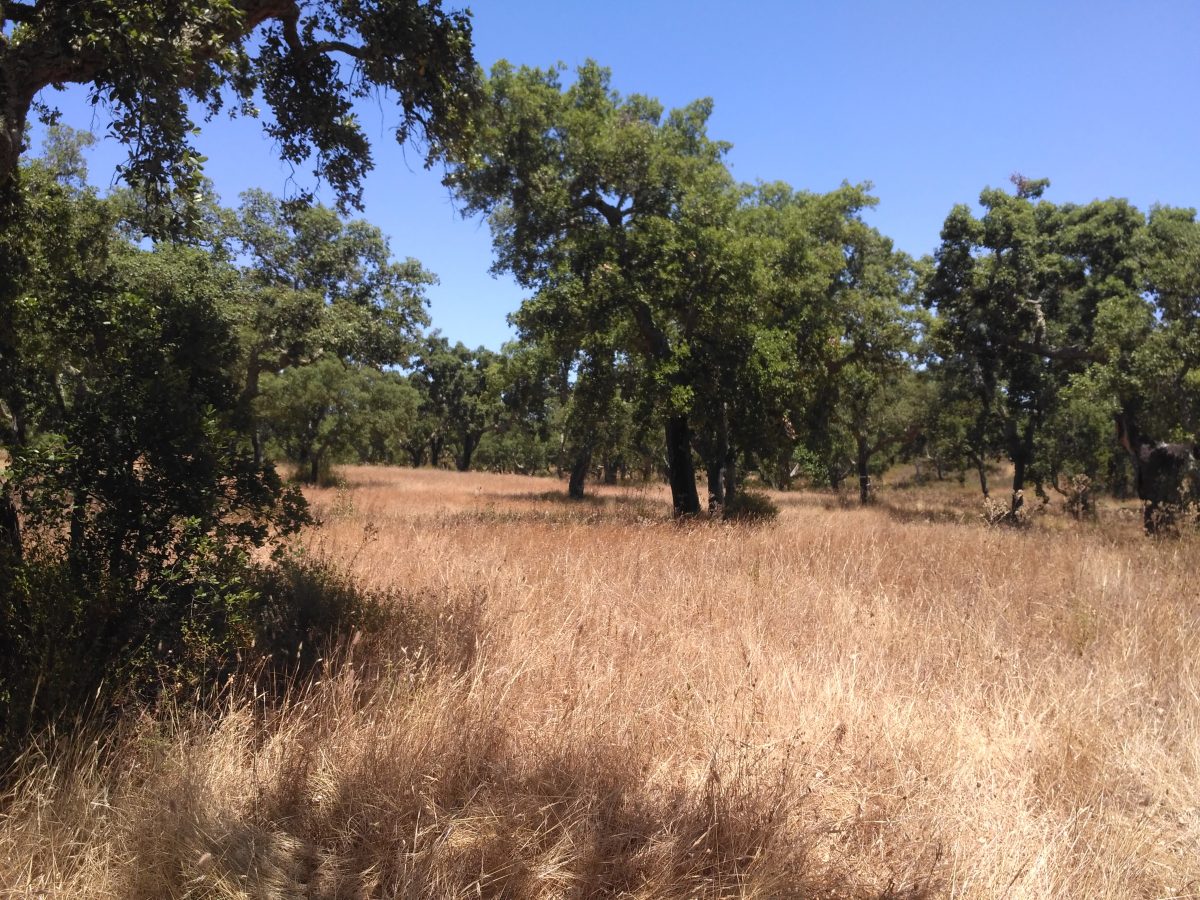
Field trial to study the impact of different management alternatives for undergrowth in cork oak forests
State: Active
Start: 2003
Location: Montargil
This test, located near the town of Montargil, was installed under a protocol established between the CEF and the property management entity in 2002, with the aim of responding to a theme identified by the latter. It currently covers a total area of 6 hectares, characterized by an irregularly structured cork oak forest. In this area, undercover management is carried out according to one of the following alternatives: i) removal of weeds with a shredder at a minimum frequency of 3 years ii) removal of weeds with a shredder at a minimum frequency of 3 years followed by application of fertilizer iii) removal of bush every 9 years. The impact of the different alternatives, in interaction with the climate, is being monitored on the following variables: a) cork growth b) cork quality c) tree growth d) shrub composition of the undercover e) biomass of the undercover.
Responsible: Joana Amaral Paulo
Publications:
Ferreiro-Domínguez N., Palma J.H.N., Paulo J.A., Rigueiro-Rodríguez A., Mosquera-Losada M.R (2022) Assessment of soil carbon storage in three land use types of a semi-arid ecosystem in South Portugal. Catena, 213: 106196. DOI: https://doi.org/10.1016/j.catena.2022.106196
Faias S.P., Paulo J.A., Firmino P.N., Tomé M. (2019) Drivers for annual cork growth under two understory management alternatives on a podzolic cork oak stand Forests, 10(2): 133.
ForChange
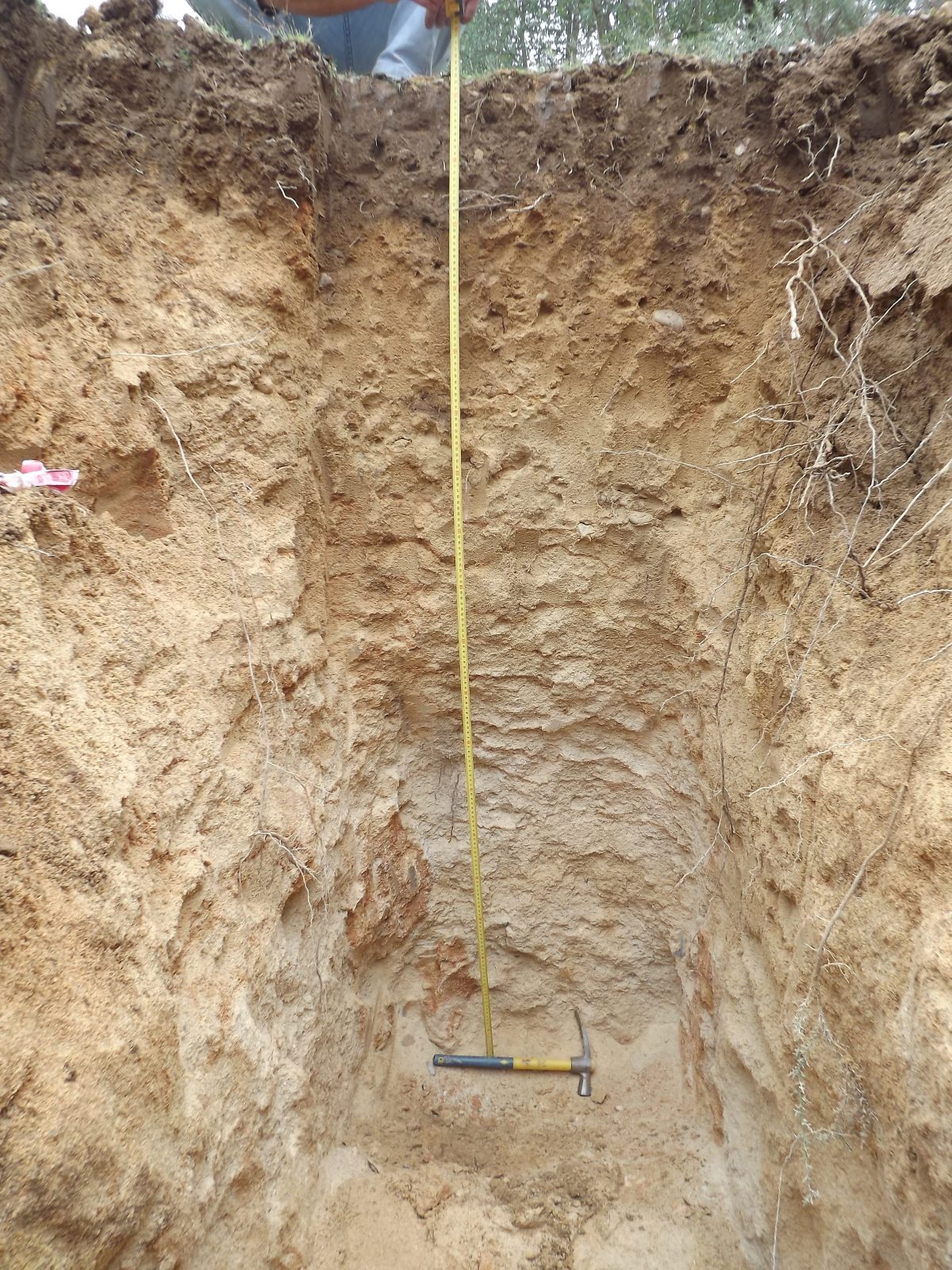
Network of permanent plots in young cork oak plantations
State: Active
Start: 2007
The network includes 44 plots, each with a fixed area of 2000 m2, measured every 3 years. The tree variables monitored are diameter at breast height and total height. In the year of its installation, soil profiles were opened and described, which allowed the physical conditions of the soil to be characterized in detail, determining root development, water retention, etc. Since the plots are located in plantations resulting from forestry reforestation projects, all forestry operations carried out (thinning, pruning, fertilization, etc.) are recorded in detail. During the most recent measurements, some of the trees were stripped of cork and were then sampled for cork. This network of plots has been the basis for several master's and doctoral studies on topics such as: analysis of intraspecific competition, mortality studies, effects of undercover management, forestry, or forest modeling. The network is expanding, in an attempt to achieve the greatest possible variability in terms of geographic distribution, soil types, climate and installation densities.
Responsible: Joana Amaral Paulo
Publications:
Firmino, P. N., Tomé, M., Paulo, J. A. (2023) Do Distance-Dependent Competition Indices Contribute to Improve Diameter and Total Height Tree Growth Prediction in Juvenile Cork Oak Plantations? Forests 14(5), 1066. DOI: https://doi.org/10.3390/f14051066
Lecomte X., Paulo J.A., Tomé M., Veloso S., Firmino P.N., Faias S.P., Caldeira M.C. (2022) Shrub understorey clearing and drought affects water status and growth of juvenile Quercus suber trees Forest Ecology and Management, 503, 119760. DOI: https://doi.org/10.1016/j.foreco.2021.119760
Paulo J.A., Tomé M. (2017) Using the SUBER model for assessing the impact of cork debarking rotation on equivalent annual annuity in Portuguese stands Forest Systems, 26(1): e008.
Paulo J.A., Faias S.P., Ventura-Giroux C., Tomé M. (2016) Estimation of stand crown cover using a generalized crown diameter model: application for the analysis of Portuguese cork oak stands stocking evolution iForest - Biogeosciences and Forestry, 9: 437-444.
Paulo J.A., Faias S., Gomes A.A., Palma J.H.N., Tomé J., Tomé M. (2015) Predicting site index from climate and soil variables for cork oak (Quercus suber L.) stands in Portugal New Forests, 46(2):293-307.
Coelho M.B., Paulo J.A., Palma J.H.N., Tomé M. (2012) Contribution of cork oak plantations installed after 1990 in Portugal to the Kyoto commitments and to the landowners economy Forest Policy and Economics, 17: 59-68.
Paulo J.A., Tomé J., Tomé M. (2011) Nonlinear fixed and random generalized height-diameter models for Portuguese cork oak stands Annals of Forest Science, 68(2): 295-309.
ForChange
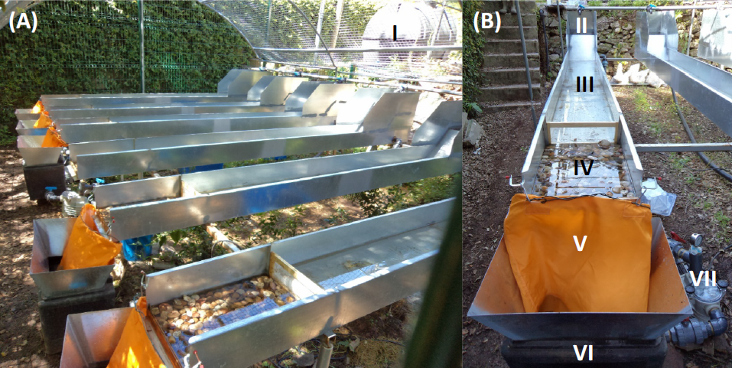
MultiCanal Mesocosms (MCM)
State: Active
Start: 2016
Location: Tapada da Ajuda (Campus do ISA)
The present mesocosm consists of a set of 6 external artificial channels coated with zinc (each 0.4 m wide × 4 m long × 0.2 m deep), where water is supplied after being stored in a central tank of 3000 L. The water source is a natural spring whose water is distributed to the main containers (70 L) located in the upper section of each channel. Water from each channel, delimited downstream by a fixed mesh panel, flows to a downstream tank (70 L) connected to a pump (Kripsol OK-71 B, 0.56 kW) which operates in a closed system allowing water conditions to be maintained, regardless of that of the source tank. Water distribution and recirculation are guaranteed with a HDPE piping system.
Responsible: José Maria Santos
Publications:
Leite, T., Mameri D., Branco P., Vieira I., Oliveira M., Santos J.M. (2023) Swimming under pressure: the sub-lethal effects of a pesticide on the behaviour of native and non-native Cypriniformes fish Fishes, 8(9): 462. DOI: https://doi.org/10.3390/fishes8090462
Leite T., Branco P., Ferreira M.T., Santos J.M. (2022) Activity, boldness and schooling in freshwater fish are affected by river salinization Science of the Total Environment, 819: 153046. DOI: https://doi.org/10.1016/j.scitotenv.2022.153046
Mameri D., Branco P., Ferreira M.T., Santos J.M. (2020) Heatwave effects on the swimming behaviour of a Mediterranean freshwater fish, the Iberian barbel Luciobarbus bocagei Science of the Total Environment, 730: 139152. DOI: https://doi.org/10.1016/j.scitotenv.2020.139152
Gonino G., Branco P., Benedito E., Ferreira M.T., Santos J.M. (2019) Short-term effects of wildfire ash exposure on behaviour and hepatosomatic condition of a potamodromous cyprinid fish, the Iberian barbel Luciobarbus bocagei (Steindachner, 1864). Science of the Total Environment, 665: 226-234. DOI: https://doi.org/10.1016/j.scitotenv.2019.02.108
Leite T., Santos J.M., Ferreira M.T., Canhoto C., Branco P. (2019) Does short-term salinization of freshwater alter the behaviour of the Iberian barbel (Luciobarbus bocagei, Steindachner 1864)? Science of The Total Environment, 651(1): 648-655. DOI: https://doi.org/10.1016/j.scitotenv.2018.09.191
Calapez A.R., Serra S.R.Q., Santos J.M., Branco P., Ferreira M.T., Hein T., Brito A.G., Feio M.J. (2018) The effect of hypoxia and flow decrease in macroinvertebrate functional responses: a trait-based approach to multiple-stressors in mesocosms. Science of the Total Environment, 637-638: 647-656. DOI: https://doi.org/10.1016/j.scitotenv.2018.05.071
ForProtect

River Experimental Flume (REF)
State: Active
Start: 2006
Location: Laboratório Nacional de Engenharia Civil, Lisboa (Protocolo permanente ISA-IST-LNEC)
The structure consists of a rectangular channel measuring 10 m long x 1 m wide x 1.2 m high, resembling a pool-type fishway, built on a steel structure with glass side walls that allows monitoring the behaviour and movements of fish species, as well as the hydraulic processes that occur within them. The device is made up of 6 successive basins divided by cross-walls with notches and /or orifices, or vertical slots. The slope is adjustable, between 0 and 15%. It also includes an upstream (1.85 m long × 1 m wide × 1.2 m high) and a downstream tank (4 m long × 3 m wide × 4 m high). This is a full-scale model (1:1); a very plastic structure and adaptable to different configurations in the search for new solutions for fish passage through river barriers, and to evaluate responses to hydraulic and hydrological variations, developing natural-based structures.
Responsible: José Maria Santos
Publications:
Amaral S.D., Branco P., Romão F., Ferreira M.T., Pinheiro A.N., Santos J.M. (2021) Evaluation of low-head ramped weirs for a potamodromous cyprinid: effects of substrate addition and discharge on fish passage performance, stress and fatigue Water, 13(6): 765. DOI: https://doi.org/10.3390/w13060765
Romão F., Quaresma A.L., Santos J.M., Amaral S.D., Branco P., Pinheiro A.N. (2021) Multislot fishway improves entrance performance and fish transit time over vertical slots Water, 13(3): 275. DOI: https://doi.org/10.3390/w13030275
Silva A.T., Bermudez M., Santos J.M., Rabunal J.R., Puertas J. (2020) Pool-type fishway design for a potamodromous cyprinid in the Iberian Peninsula: the Iberian barbel-synthesis and future directions Sustainability, 12(8): 3387. DOI: https://doi.org/10.3390/su12083387
Amaral S.D., Branco P., Katopodis C., Ferreira M.T., Pinheiro A.N., Santos J.M. (2019) Passage performance of potamodromous cyprinids over an experimental low-head ramped weir: the effect of ramp length and slope. Sustainability, 11(5): 1456. DOI: https://doi.org/10.3390/su11051456
Amaral S.D., Quaresma A.L., Branco P., Romão F., Katopodis C., Ferreira M.T., Pinheiro A.N., Santos J.M. (2019) Assessment of retrofitted ramped weirs to improve passage of potamodromous fish Water, 11(12): 2441.
Hayes D., Branco P., Santos J.M., Ferreira M.T. (2019) Oxygen depletion affects kinematics and shoaling cohesion of cyprinid fish. Water, 11(4): 642. DOI: https://doi.org/10.3390/w11040642
Romão F., Quaresma A.L., Santos J.M., Branco P., Pinheiro A.N. (2019) Cyprinid passage performance in an experimental multislot fishway across distinct seasons. Marine and Freshwater Research, 70(6) 881-890. DOI: https://doi.org/10.1071/MF18232
Amaral S.D., Branco P., Katopodis C., Ferreira M.T., Pinheiro A.N., Santos J.M. (2018) To swim or to jump? Passage behaviour of a potamodromous cyprinid over an experimental broad-crested weir. River Research and Applications, 34(2): 174-182. DOI: http://dx.doi.org/10.1002/rra.3232
Romão F., Santos J.M., Katopodis C., Pinheiro A.N., Branco P. (2018) How does season affect passage performance and fatigue of Potamodromous Cyprinids? An experimental approach in a vertical slot fishway. Water, 10(4): 395.
Amaral S.D., Branco P., Romão F., Viseu T., Ferreira M.T., Pinheiro A.N., Santos J.M. (2018) The effect of weir crest width and discharge on passage performance of a potamodromous cyprinid. Marine and Freshwater Research, 9(12): 1795-1804.
Romão F., Quaresma A.L., Branco P., Santos J.M., Amaral S., Ferreira M.T., Katopodis C., Pinheiro A.N. (2017) Passage performance of two cyprinids with different ecological traits in a fishway with distinct vertical slot configurations. Ecological Engineering, 105: 180-188.
Amaral S., Branco P., Silva A.T., Katopodis C., Viseu T., Ferreira M.T., Pinheiro A.N., Santos J.M. (2016) Upstream passage of potamodromous cyprinids over small weirs: the influence of key-hydraulic parameters. Journal of Ecohydraulics, 1(1-2):79-89.
Silva A.T., Katopodis C., Tachie M., Santos J.M., Ferreira M.T. (2016) Downstream swimming behaviour of catadromous and potamodromous fish over spillways. River Research and Applications, 32(5): 935-945.
Branco P., Santos J.M., Amaral S., Romão F., Pinheiro A.N., Ferreira M.T. (2016) Potamodromous fish movements under multiple stressors: connectivity reduction and oxygen depletion. Science of the Total Environment, 572: 520-525.
Santos J.M., Branco P., Katopodis C., Ferreira M.T., Pinheiro A.N. (2014) Retrofitting pool-and-weir fishways to improve passage performance of benthic fishes: effect of boulder density and fishway discharge. Ecological Engineering, 73: 335-344.
Branco P., Boavida I, Santos J.M., Pinheiro A.N., Ferreira M.T. (2013) Boulders as building blocks: improving habitat and river. Ecohydrology, 6(4): 627-634.
Branco P., Santos J.M., Katopodis C., Pinheiro A., Ferreira M.T. (2013) Pool-type fishways: two different morpho-ecological cyprinid species facing plunging and streaming flows. PLoS ONE, 8(5): e65089.
Branco P., Santos J.M., Katopodis C., Pinheiro A.N., Ferreira M.T. (2013) Effect of flow regime hydraulics on passage performance of Iberian chub (Squalius pyrenaicus) (Gunther, 1868) in an experimental pool-and-weir fishway. Hydrobiologia, 714(1): 145-154.
Santos J.M., Branco P., Silva A.S., Katopodis C., Pinheiro A., Viseu T., Ferreira M.T. (2013) Effect of two flow regimes on the upstream movements of the Iberian barbel (Luciobarbus bocagei) in an experimental pool-type fishway. Journal of Applied Ichthyology, 29: 425-430.
Santos J.M., Silva A.T., Katopodis C., Pinheiro P.J.,. Pinheiro A.N, Bochechas J., Ferreira M.T. (2012) Ecohydraulics of pool-type fishways: getting past the barriers Ecological Engineering, 48: 38-50.
Silva A.T., Santos J.M., Ferreira M.T., Pinheiro A.N., Katopodis C. (2012) Passage efficiency of offset and straight orifices for upstream movements of Iberian barbel in a pool-type fishway. River Research and Applications, 28(5): 529-542.
Silva A.T., Santos J.M., Ferreira M.T., Pinheiro A., Katopodis C. (2011) Effects of water velocity and turbulence on the behaviour of Iberian barbel (Luciobarbus bocagei, Steindachner 1864) in an experimental pool-type fishway. River Research and Applications, 27(3): 360-373.
Silva A.T., Santos J.M., Franco A.C., Ferreira M.T., Pinheiro A.N. (2009) Selection of Iberian barbel Barbus bocagei (Steindachner, 1864) for orifices and notches upon different hydraulic configurations in an experimental pool-type fishway. Journal of Applied Ichthyology, 25(2): 173-177.
ForProtect
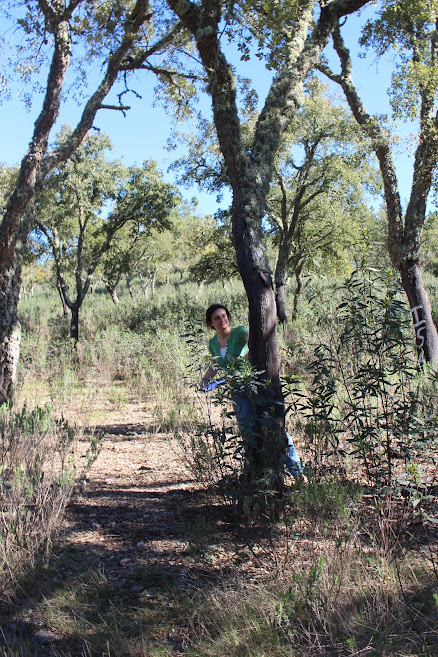
Field trial of cork debarking intensities
State: Active
Start: 2003
Location: Perímetro Florestal da Contenda
This trial includes 10 plots located in an area of cork oak forests, in which the trees are managed with three different levels of debarking intensities. The trees, measured since 1995, were debarked for the first time in 2003. The test aims to assess the long-term effect of different debarking intensities on tree and cork growth.
Responsible: Joana Amaral Paulo
Publications:
Paulo, J. A., Santos, D. I. (2023) Virgin cork colour and porosity as predictors for secondary cork industrial quality Industrial Crops and Products 205 (1): 117513. . DOI: https://doi.org/10.1016/j.indcrop.2023.117513
Paulo J.A., Tomé M. (2017) Does debarking intensity in the first cork extraction affect future cork thickness? Annals of Forest Science, 74: 66. DOI: https://doi.org/10.1007/s13595-017-0662-x
ForChange
